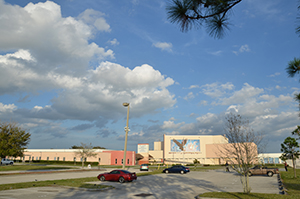Thermal Energy Storage Saves Energy, Costs for Schools
 FAIR LAWN, N.J. — Using innovative sustainable strategies, the thermal energy storage solutions of Calmac Manufacturing have proven to create big cost savings for school districts.
FAIR LAWN, N.J. — Using innovative sustainable strategies, the thermal energy storage solutions of Calmac Manufacturing have proven to create big cost savings for school districts.
The company recently released its case study of St. Lucie County School District, which previously had one of the highest energy costs per square foot of school districts in the state of Florida. Realizing a need for change, the school district implemented Calmac thermal energy storage technology to reduce their heavy energy bills.
“Our products run the chillers of a building at night when they’re usually doing nothing,” said Mark MacCracken, Calmac CEO. “We store the energy in the form of ice. During the day, we melt the ice in order to cool the building. So, you’ve shifted a major electric load from the on-peak period to the off-peak period. We’re decoupling when you create cooling from when you’re using the cooling.”
By using the company’s IceBank thermal energy storage, the school district saw a reduction of $5 million in utility costs over the past seven years. Overall, the company has completed hundreds of installations in schools throughout Florida and the nation. In a time where maintaining fiscal sustainability is critical, energy savings made with the thermal energy storage technology can help relieve the pressures of budget cuts, MacCracken said.
“There is a large savings in energy cost, which the administration sees, and they can then use these savings to hire another teacher or something of that nature,” he said. “It may improve the quality of education because you have a better student-teacher ratio.”
 Many of the earlier myths surrounding thermal energy storage have now been dispelled, and commercial buildings are realizing the major cost savings in using off-peak energy.
Many of the earlier myths surrounding thermal energy storage have now been dispelled, and commercial buildings are realizing the major cost savings in using off-peak energy.
“Thermal storage is not difficult, we’ve taken the complexity out of it. It’s a proven and reliable product that saves owners money and energy,” MacCracken said.
MacCracken likened the utilization of thermal energy storage in commercial buildings to throwing a barbecue at one’s home.
“If you’ve ever thrown a barbecue at your house and you have 20 people coming over, you would never think it’s a good idea to start making the ice cubes for the party when people start walking through the door,” he said. “Your refrigerator could never keep up with it.”
Though it is standard practice to instantly cool a building during on-peak periods, it is simply illogical to do so, MacCracken said. Using energy collected during off-peak periods is far cheaper for owners, he said.
“To air condition that same person at the barbecue in a commercial building, for each person you need the equivalent cooling of somewhere between 150 and 300 pounds of ice. And yet, in most buildings they start making the cooling instantaneously when people get there,” MacCracken said.
Additionally, the practice of thermal energy storage is much more environmentally friendly. Buildings must lessen their dependence on carbon-based fuels and opt for renewable energy to become better stewards to the environment, MacCracken said.
“Renewables are very important as we move forward to try to lessen our impact on the environment,” he said.
